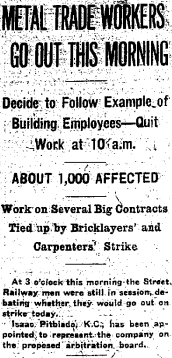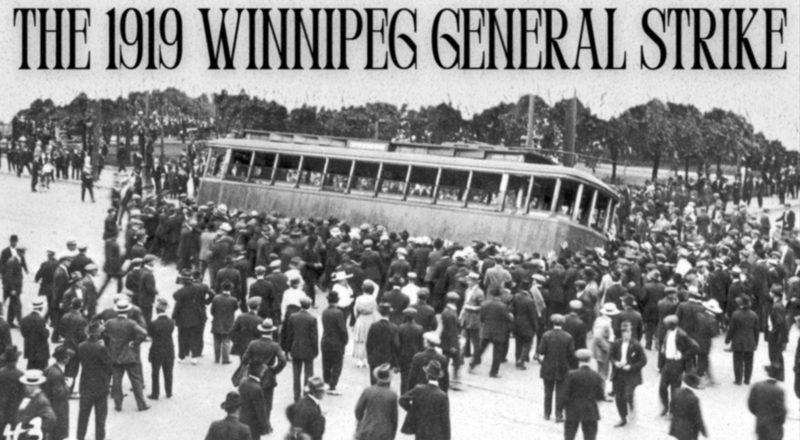
/ Blog
April 24, 2019
The 1919 Winnipeg General Strike: Breaking Point – Contract Negotiations Stall
As 2019 marks the 100th anniversary of the 1919 Winnipeg General Strike, Heritage Winnipeg is commemorating the year by looking back at the events during this tumultuous period of history that helped shape our city. This article is part of a series of guest posts reflecting on the some of the places that bore witness to the Strike and the events leading up to it. Read all the blogs in this series from the beginning:
Walker Theatre Meeting Sets the Stage
Population Growth and the Canadian Pacific Railway Station
The Western Labour Conference in Calgary
Breaking Point – Contract Negotiations Stall
The Strike Shuts Down Winnipeg
Veterans Protest With and Against the Strike
Specials and Strikers Riot
Raids and Arrests
Bloody Saturday
Russell Sedition Trial
The specific catalyst, the breaking point for the workers that provoked the Winnipeg General Strike, was a bargaining impasse between industry employers and a group of unions representing employees. Negotiations over a key issues in early 1919 seemed impossible to resolve as positions vigorously polarized. Two sets of contract negotiations converged in April and neither was going well.
The Metal Trades Council was bargaining for increased wages and shorter working hours. The owners of the ‘big three’ industries in the north end of Winnipeg: Manitoba Bridge and Iron Works, Vulcan Iron Works (which remains on Sutherland Avenue), and Dominion Bridge Company were adamant they would not bargain with the Council that sought to represent the various unions and their members – metal workers, tinsmiths, boilermakers, and machinists.
At the same time, the Building Trades Council, which represented workers in the skilled trades such as electricians and carpenters, was negotiating with the Builders Exchange which represented the construction companies and builders. While these employers agreed wage increases were needed they disagreed on how much they could afford – employers offered about 15% increase, workers wanted double that amount. When negotiations broke down for both sets of unions, involving about 6,000 members, they voted to strike. On May 1st the metal workers went on strike and the next day the building trades members struck.

Source: Winnipeg Free Press, May 2nd, 1919, page 1 (public domain)
By 1918 there was a cadre of union leaders who had experience dealing with intransigent employers. In the spring of 1918 contract negotiations with the City of Winnipeg stalled for electricians, water works staff, sanitation workers and teamsters/stablemen, over wage increases. City management and the politicians proposed wage increases that the unions refused and then threatened to strike. Immediately there was talk in other unions about a general strike in support. The electricians went on strike May 2 and the City fired them all a few days later. The employer’s action infuriated the unions, turning a wage issue into a major conflict over the right to organize and to strike. For three weeks, 40 unions and about 15,000 workers either voted to support the striking workers or joined the general strike.
Therefore leading up to 1919, the 1918 strike made small wage gains for the unions, however, the tactic of a general strike demonstrated union solidarity that encouraged workers but threatened employers and government officials. Both parties to this confrontation saw a mounting ability of the unions to backup their contract demands with significant labour action and economic consequences.
The Vice-President of Vulcan Iron Works reflected an extreme attitude of the employers towards unions.
We had a long fight with the unions 10 years ago, and since then we have refused to meet any Committee, and what is more we never will. This is a free country and … as far as we are concerned, the day will never come when we will have to take orders from any union
THANK YOU TO THE SPONSOR OF THIS BLOG POST:

Guest post written by Dennis Lewycky.
Edited by Heritage Winnipeg.











